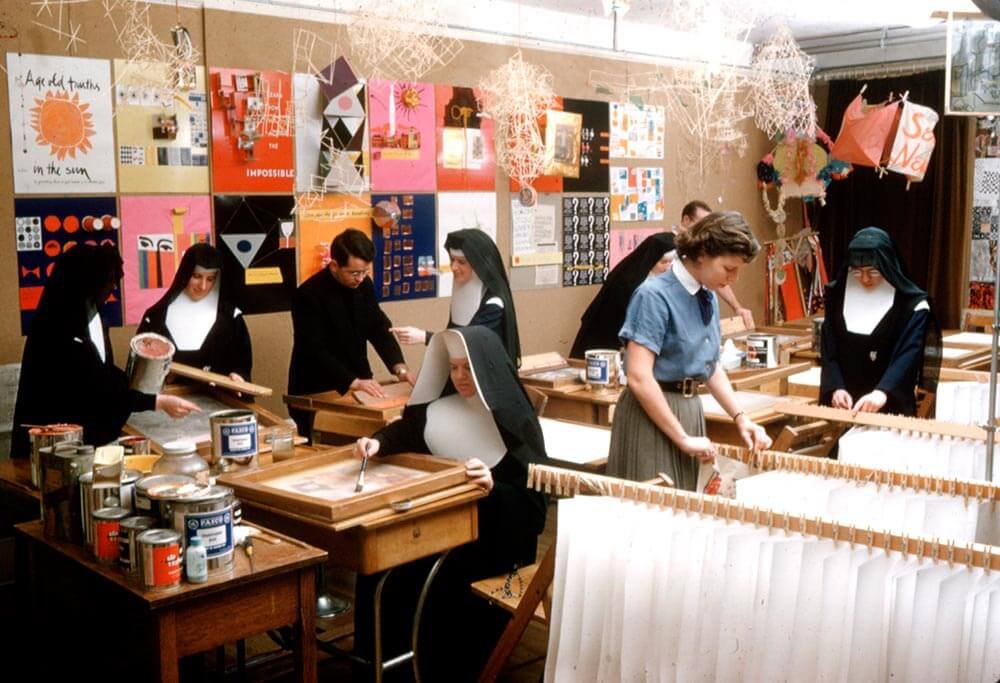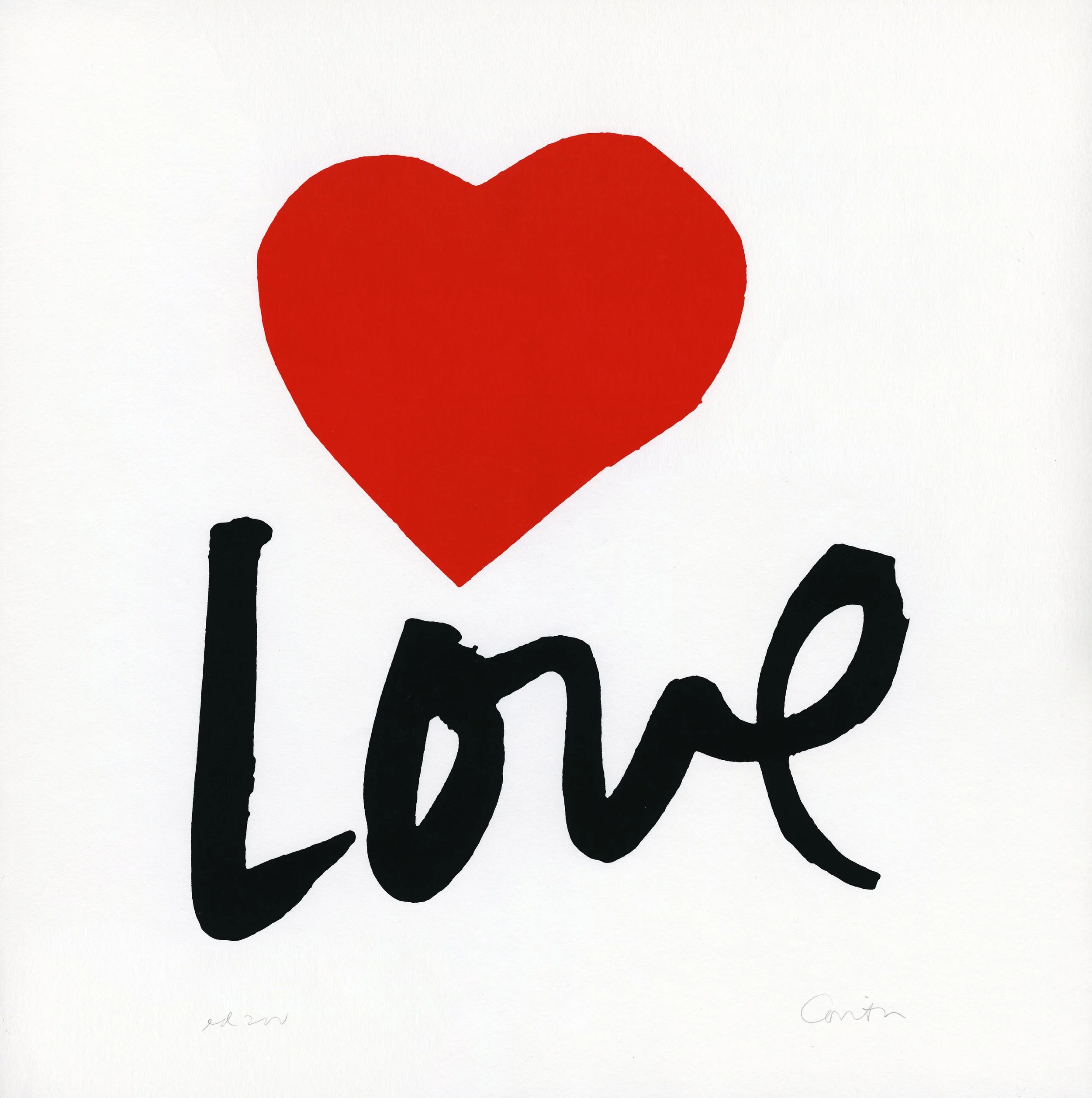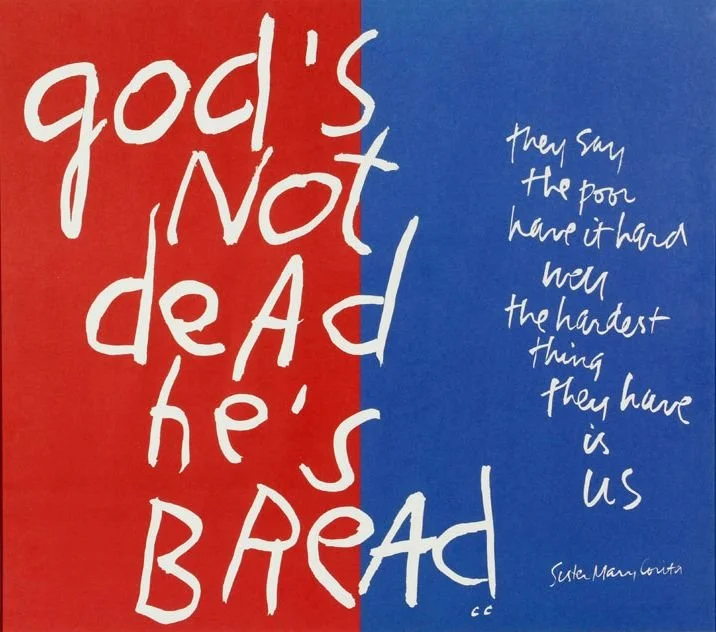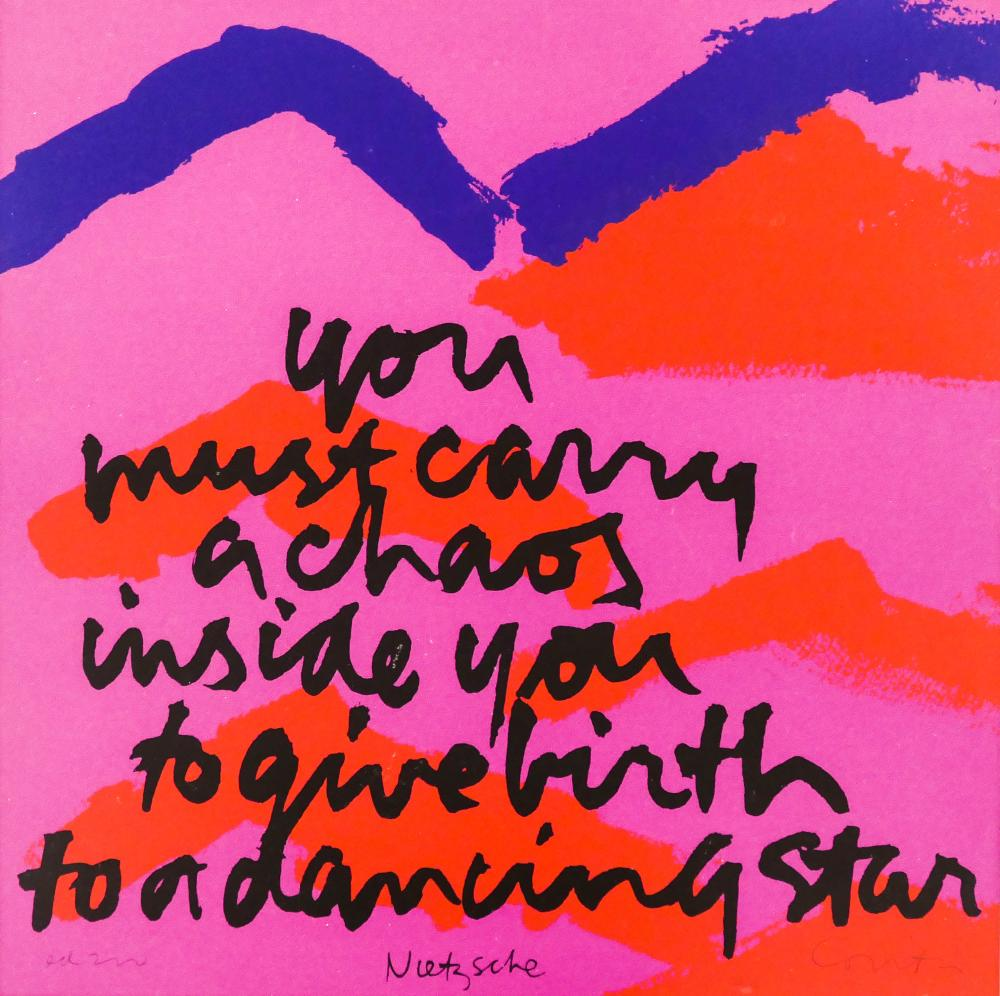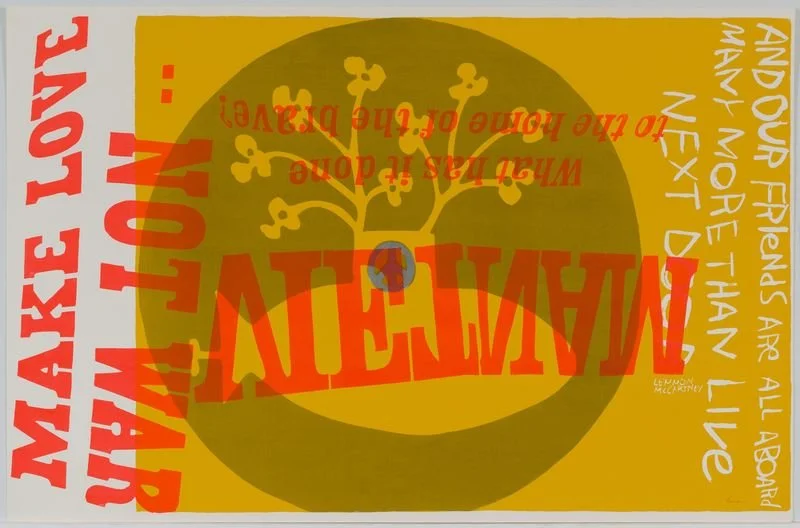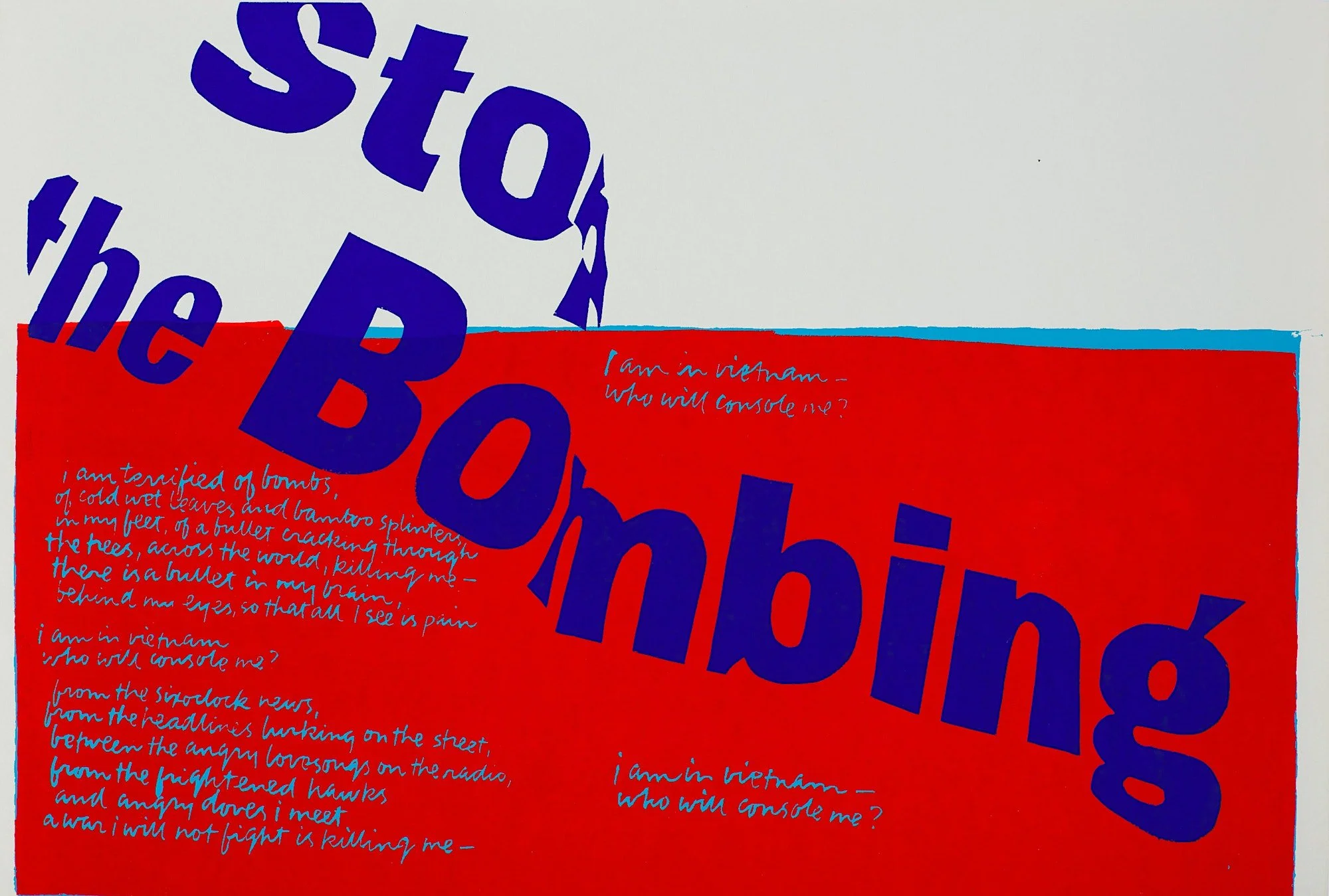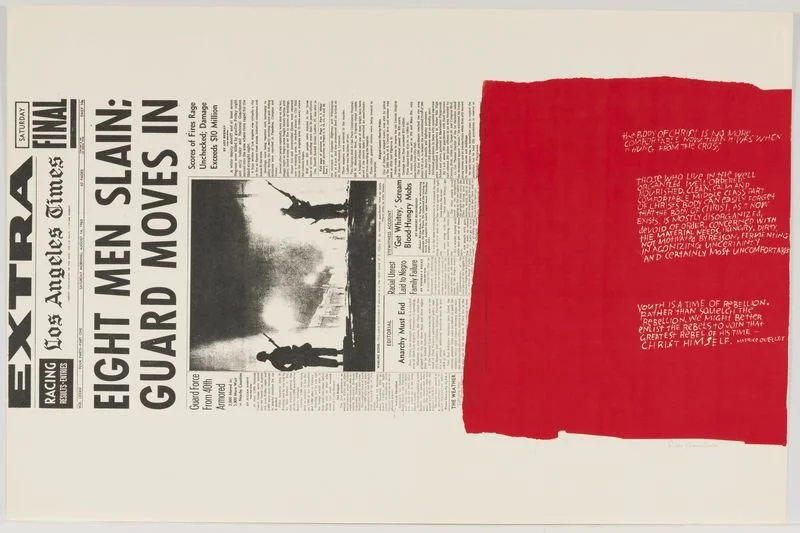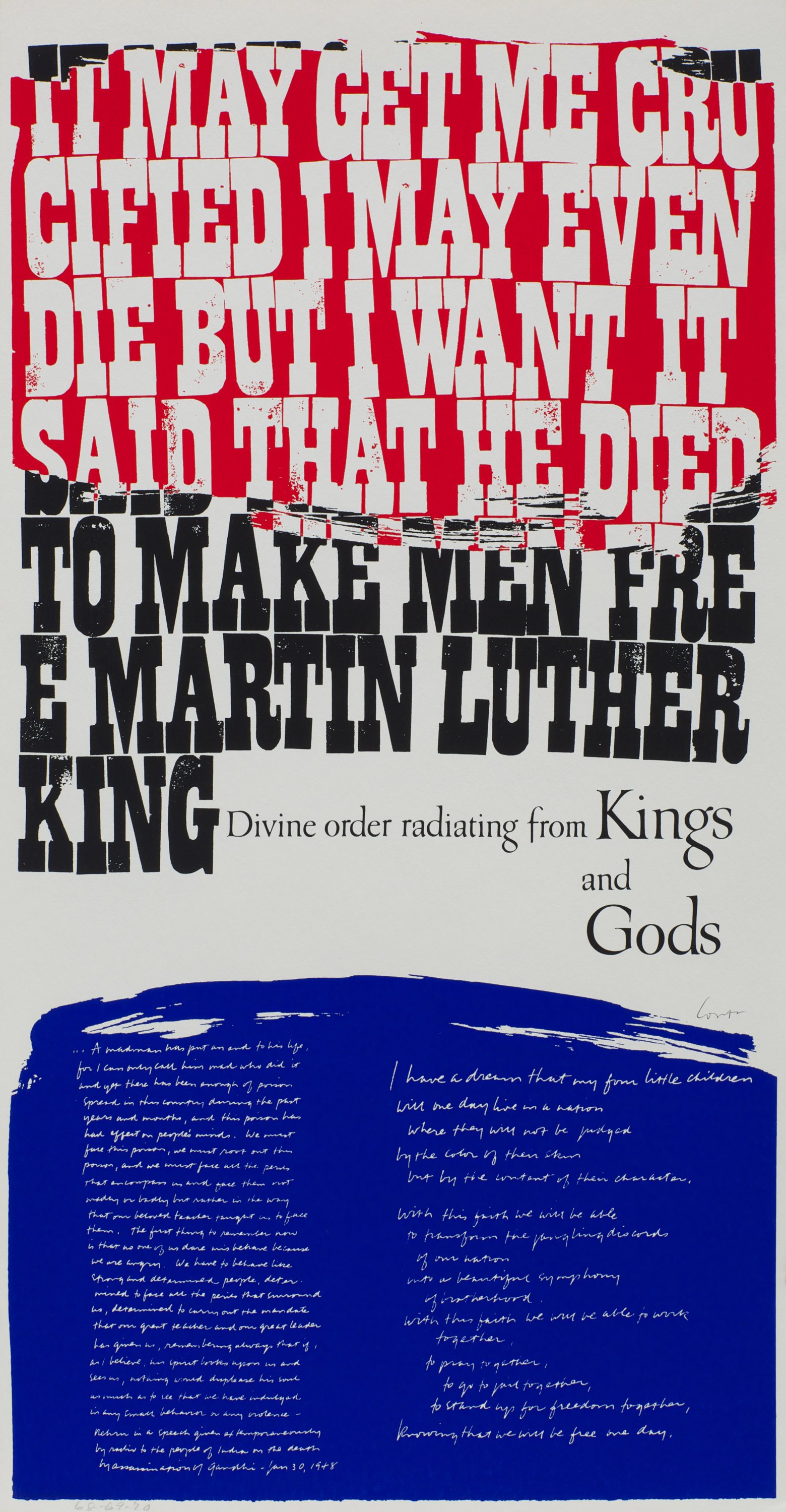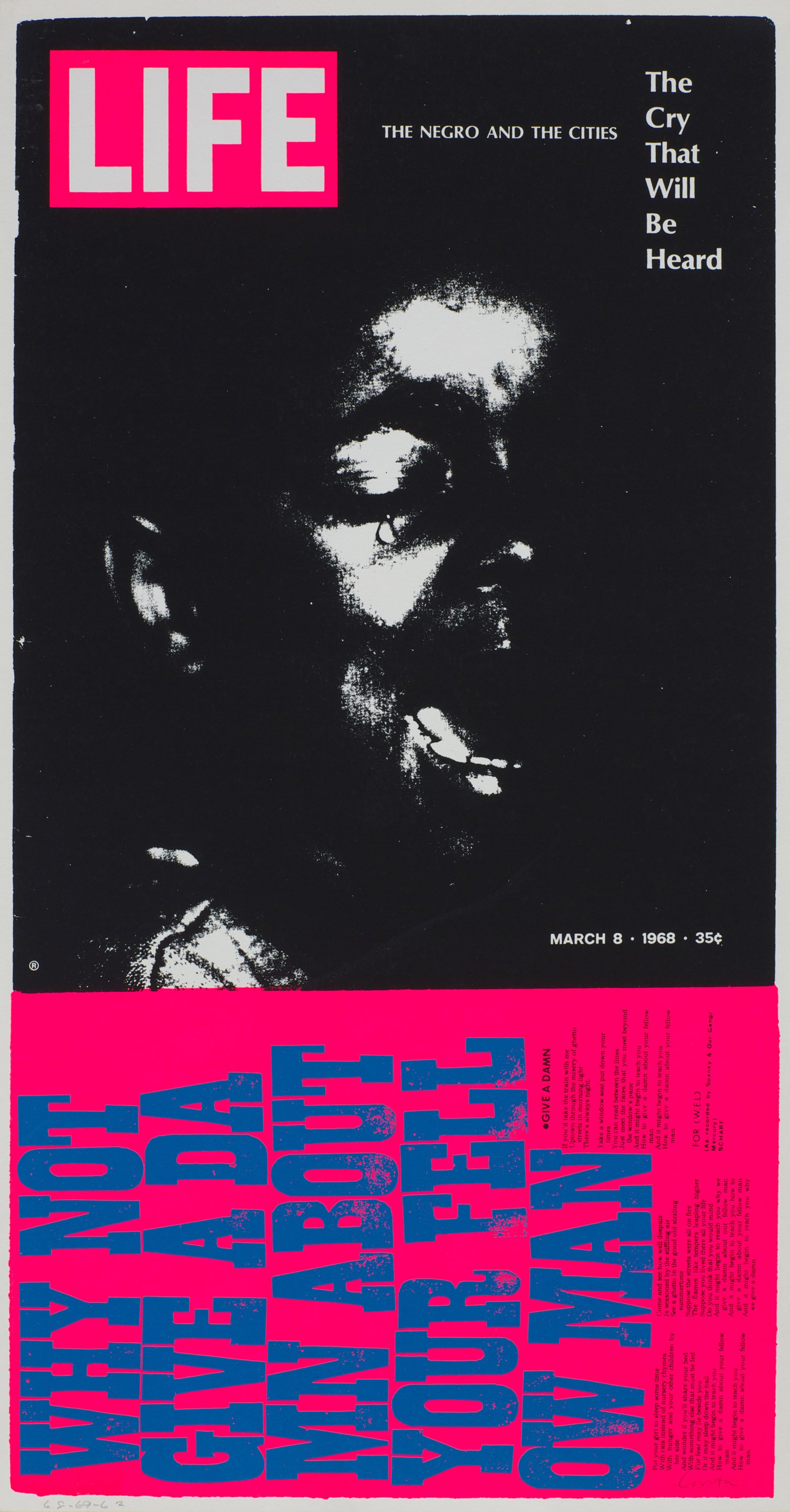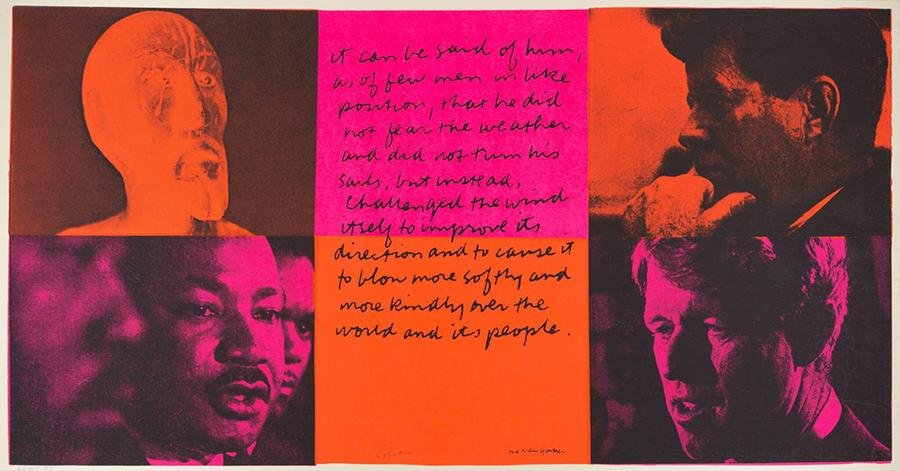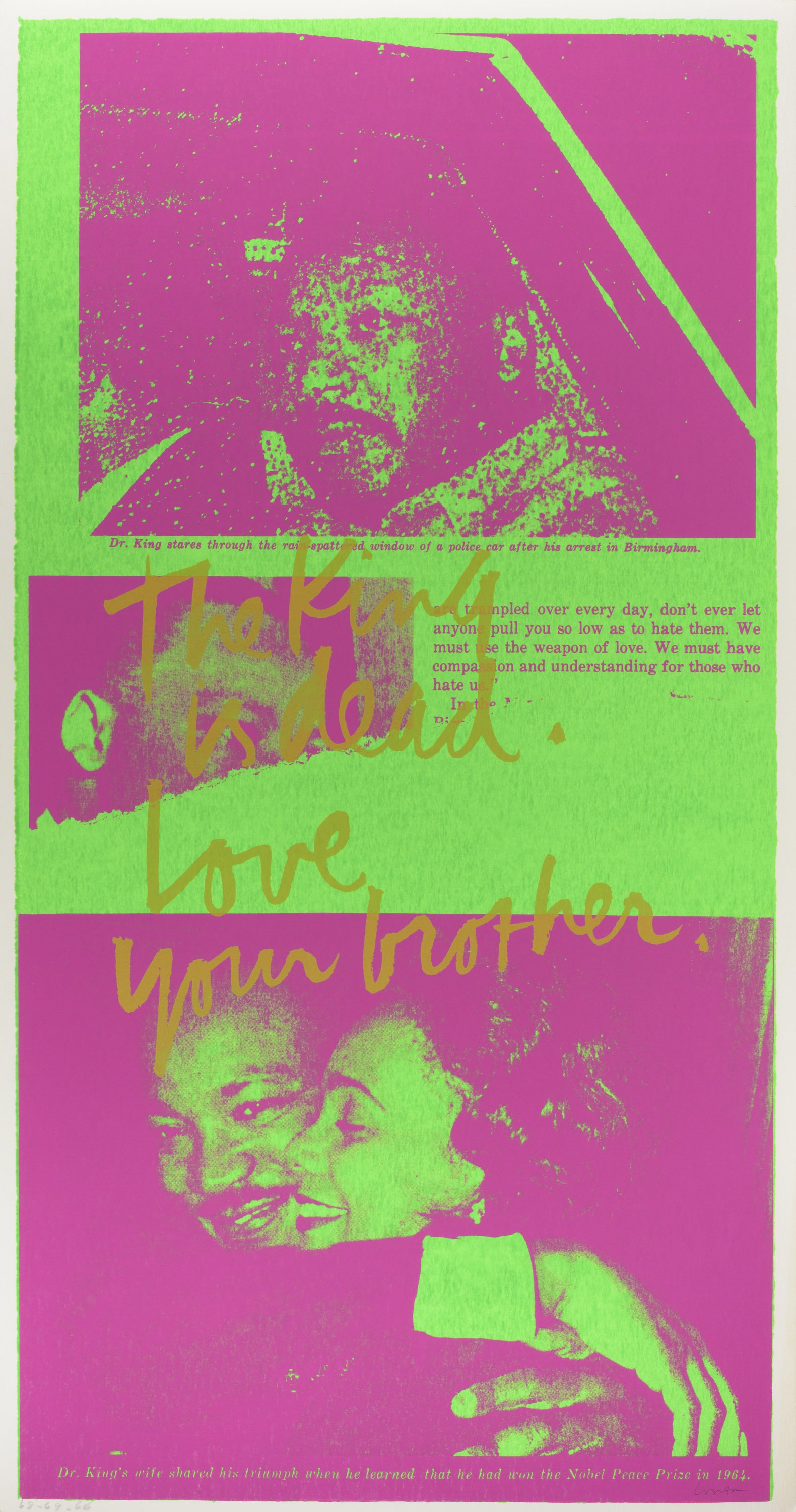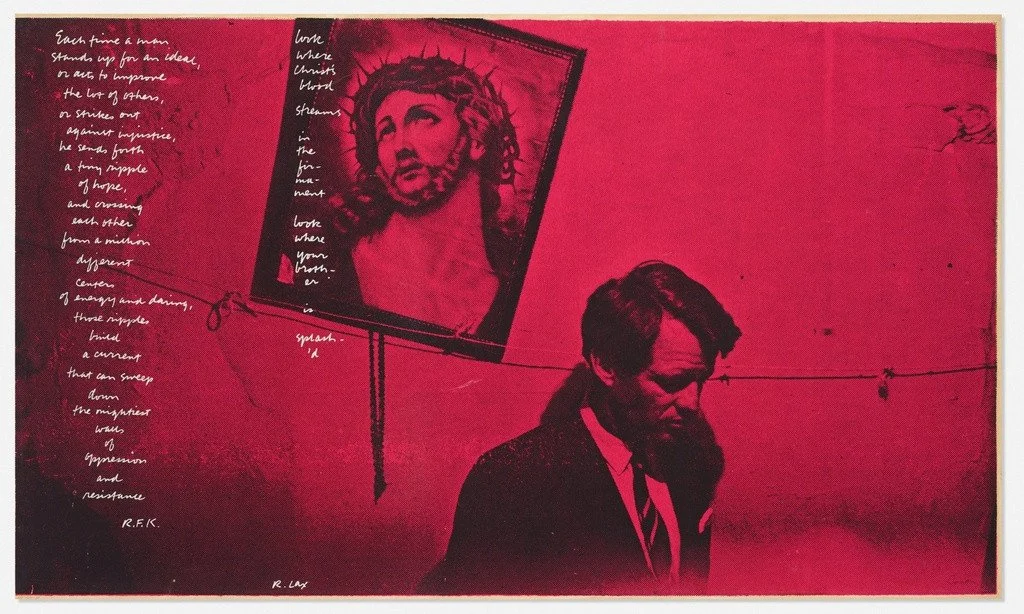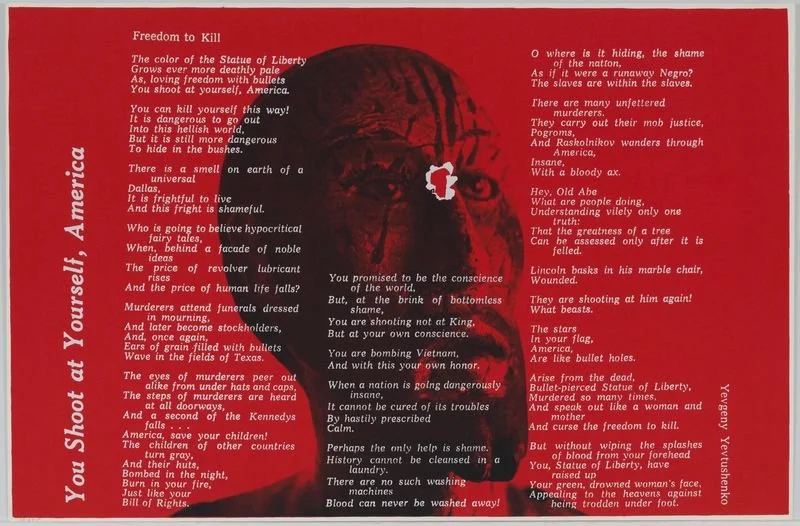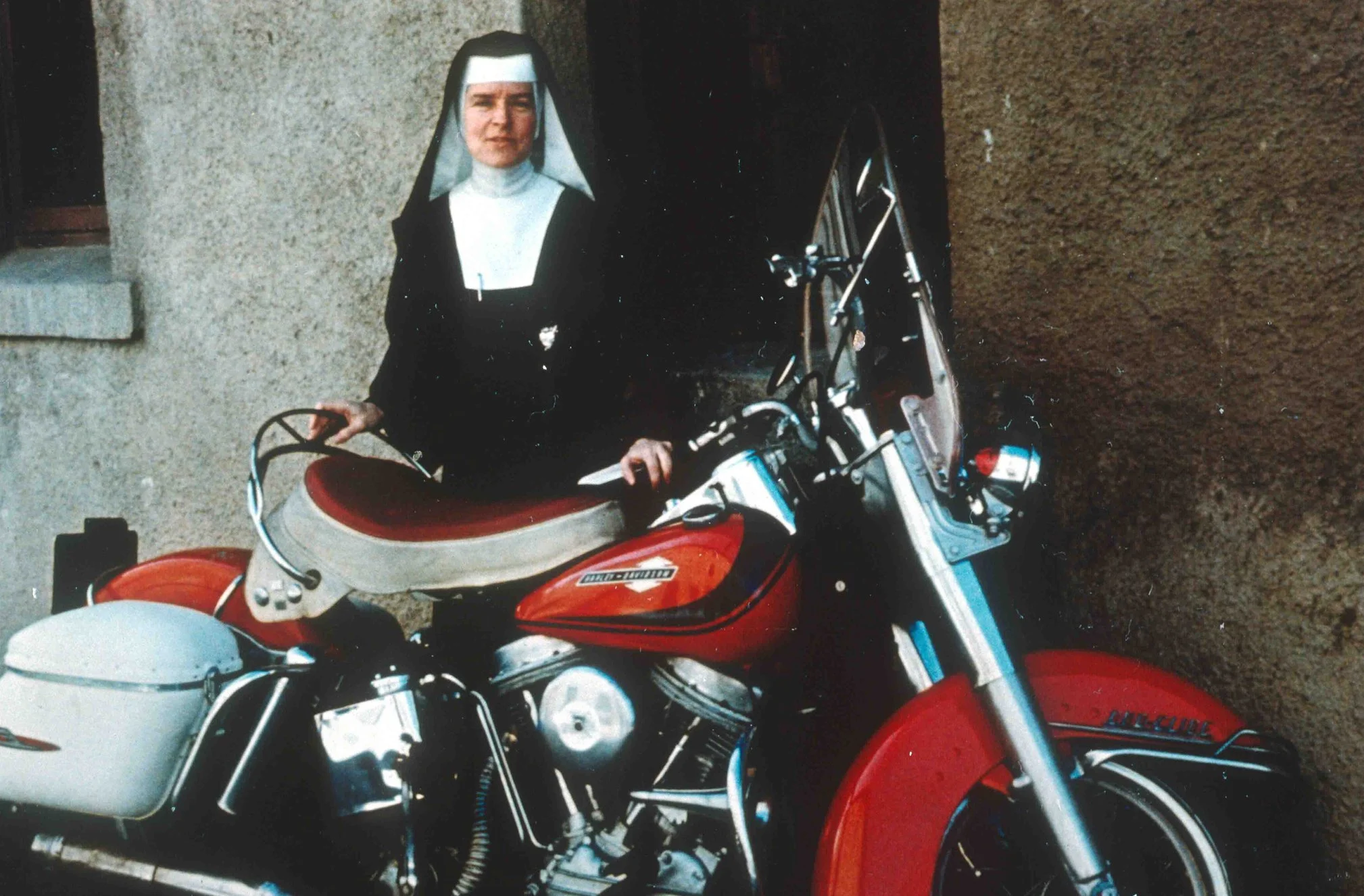Sister Corita Kent: Painting the world with the colors of justice
Art and social activism share a unique and powerful bond as both possess the ability to challenge prevailing narratives, inspire change and unite people around a common cause. There are many examples of this creative synergy, but none that resonates with me as much as a revolutionary pop artist in a nun’s habit: Sister Corita Kent.
Sister Corita Kent's brilliant body of work exemplifies this potent combination, with her vivid pop art, fascinating creative process and poignant messages playing an influential role in the social movements she supported. Let’s explore the vibrant creative legacy of Corita and her seamless integration of art, spirituality and activism to drive meaningful change in the world around her.
Unraveling the Tapestry of Sister Corita Kent's Art and Design
Sister Corita Kent was not just an artist or a designer. She was a beacon of light, illuminating the dark corners of society with her vibrant serigraphs (aka: screen printing) and bold messages.
Her pop art, characterized by bold colors and abstract designs, mirrored the tumultuous era of the 1960s and 70s. She repurposed advertising slogans and biblical verses to comment on issues of poverty, racism and war. Her work, although deeply rooted in her faith, transcended the boundaries of religion, speaking to a universal audience about love, hope and justice.
As a teacher at LA's Immaculate Heart College, Sister Corita Kent helped to cultivate a vibrant arts community and grew deep in her love for printmaking (her favorite “populist” medium). Her artistic creations, which included posters, murals and signature serigraphs, masterfully combined messages of love and faith with images from popular culture, showcasing her innovative use of typography and color.
For Sister Corita, printmaking was a powerful tool for communicating with the world and connecting with those around her regardless of color, economic status or creed.
“I see things in terms of illumination. There’s a certain territory that’s been illuminated and a vast territory that’s in the dark. And looking at that edge is what I’m interested in.”
The “artivist” on the forefront of social justice
Sister Corita's art was not just a means of expression, but a powerful vehicle for advocating social change. She was an 'Artivist' - an artist and an activist, using her work as a platform to voice her concerns and inspire change.
Protesting the Vietnam War with art
Sister Corita's art was not separate from her social activism; rather, it was an extension of it. She protested against the Vietnam War by leveraging her creativity as a form of non-violent protest.
Corita Kent, yellow submarine, 1967
Her serigraph "Yellow Submarine" (1967) combined lyrics from the Beatles with biblical references, highlighting the absurdity of war and the need for love and understanding. Her artwork served as a bold critique of the conflict, transforming the canvas into a platform for peaceful protest and raising public consciousness about the war's devastating impact.
Corita Kent, stop the bombing, 1967
Another 1967 serigraph, "stop the bombing", served as a poignant commentary on the devastating impact of the war. The transcribed text from this print reads:
I am in Vietnam--who will console me?
I am terrified of bombs, of cold wet leaves and bamboo splinters in my feet, of a bullet cracking through the trees, across the world, killing me--there is a bullet in my brain, behind my eyes, so that all I see is pain I am in vietnam--who will console me? from the sixoclock news, from the headlines lurking on the street, between the angry love songs on the radio, from the frightened hawks and angry doves I meet a war I will not fight is killing me--I am in vietnam, who will console me?
Stop the Bombing
Championing civil rights with meaningful creative alliances
Sister Corita Kent also utilized her art to champion civil rights, but her involvement in the civil rights movement extended beyond her artwork. She actively collaborated with civil rights leaders and used her platform to raise awareness about racial injustice.
Corita Kent, my people, 1965
In 1965, she created a powerful serigraph titled "my people" in response to the Watts Riots, a series of protests against police brutality and racial inequality in Los Angeles. The artwork showcased an excerpt from Langston Hughes' poem "Let America Be America Again," underscoring the importance of hope and unity during turbulent times—a far cry from another slogan on red that we have been bludgeoned with as a nation.
Sister Corita also engaged with the civil rights movement by working closely with prominent leaders such as Dr. Martin Luther King Jr. She designed a poster featuring an image of King, as well as a quote from his "Letter from Birmingham Jail," to raise funds for the Southern Christian Leadership Conference. This collaboration not only demonstrated her commitment to the cause, but also highlighted the power of art in amplifying the voices of civil rights activists.
“Art can be a form of pleading, it can caution, it can recall us to the humanity within us.”
Corita Kent, In Memory of Robert F. Kennedy, 1968
Spotlighting senseless gun violence through printmaking
So much of Corita’s art continues to resonate even all these decades later; the social impact heartaches of her generation continue to challenge and stifle us today. Case in point: the horrors of gun violence.
The powerful magenta print you see above is a piece created to mourn the assassination of Bobby Kennedy entitled “In Memory of Robert F. Kennedy” (1968). The transcribed text on the piece is an excerpt from his gorgeous “Ripple of Hope” speech:
Each time a man stands up for an ideal, or acts to improve the lot of others, or strikes out against injustice, he sends forth a tiny ripple of hope, and crossing each other from a million different centers of energy and daring, those ripples build a current which can sweep down the mightiest walls of oppression and resistance.
Look where Christ's blood streams in the firmament. Look where your brother is.
Corita Kent, you shoot at yourself, America, 1968
Connected to the RFK memorial is a JFK memorial entitled “you shoot at yourself, america” (1968) - a bright red photo collage featuring "Freedom to Kill” by Russian poet Yevgeny Yevtushenko. It is POWERFUL, it is direct, it is brave and, unfortunately, it is needed more than ever.
Damn Everything but the Circus
Let’s wrap this activist pop art love note of a blog post with a series that I am actively collecting myself, with dreams of a big blank wall on which to install a punchy-powerful “Corita Kent grid of brilliance” on: “Damn Everything but the Circus” (1970).
Inspired by a line from an e.e. cummings play, the collection is a bright-beautiful-in-your-face like the best of Corita’s work is. Here’s the rest of the quoted text (frequently attributed to another author) that Corita wove into her print series:
damn everything that is grim, dull, motionless, unrisking, inward turning, damn every thing that won't get in the circle, that won't enjoy, that won't throw its heart into the tension, surprise, fear and delight of the circus, the round world, full of existence...
Sister Corita's spirituality was the foundation of her art and activism—a firm believer in the power of love and compassion, principles that she embodied in her work and life. Her faith didn't limit her vision; it expanded it, enabling her to see beyond superficial societal constructs and address the heart of human experience.
Her serigraphs are an amalgamation of spiritual and secular images, biblical verses and popular culture references, subtly bringing the divine into the everyday. She saw God not confined within the walls of a church but present in every aspect of life. Amen.
“Love the moment. Flowers grow out of dark moments. Therefore, each moment is vital. It affects the whole. Life is a succession of such moments and to live each, is to succeed.”
TLDR Quick Summary:
Sister Corita Kent was a social justice pop art visionary, using bold color, typography and a fascinating blend of consumer and religious messaging to spread her message of love and peace
“Artivists” are artists who leverage their craft for their activism
Sister Corita's spirituality was the foundation of her art and activism, enabling her to see beyond superficial societal constructs and address the heart of human experience

